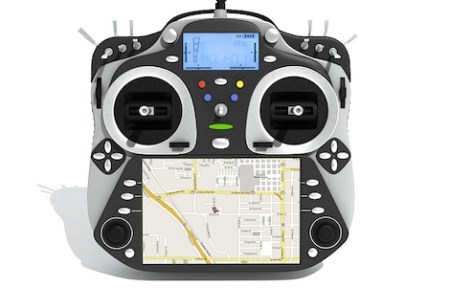[Demetris] sent in a tip about a project he’s working on: an Open Source Remote Control transmitter. This is one of the most impressive looking RC transmitters we’ve ever seen. The OSRC could be great for a small UAV – just get the GPS position from the aircraft and map it with the transmitter’s screen. There’s also support for a video downlink so flying around New York City is possible with a single device.
Wireless Hacks1097 Articles
FabLab Helps The Developing World Set Up Long-distance Wireless Ethernet
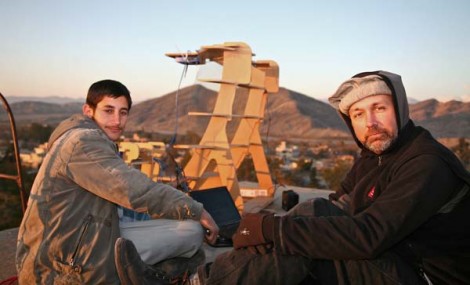
The wooden frame seen above hosts a parabolic reflector making up one side of a wireless network link. This is a Fab Lab project called FabFi which uses common networking hardware to setup long-distance wireless Ethernet connections. It’s a bit hard to tell in the image above, but the reflector focuses radio waves on the antennae of a router we’re quite familiar with, the Linksys WRT54G. It’s held upside-down in an enclosure meant to protect it from the elements. The node above manages to complete a connection spanning 2.41 miles!
One of the core values of the project is to develop hardware that is easy to build with limited resources, then to make that knowledge freely available. Anyone who has the ability to download and print out the 2D design file can build a reflector for themselves. As we’ve seen in other projects, paper stencils and hand tools can handle this job with no need for a laser-cutter (which was used for the prototype). WRT54G routers are inexpensive and the project uses the open source firmware OpenWRT. They can be run from 12VDC power which means a car battery works when mains power is not an option. The system has been running in Afghanistan for two years and hardware failure is still in the low single-digits.
[Thanks das_coach]
Tweeting Bird Feeder Keeps A Picture Record Of All Visitors
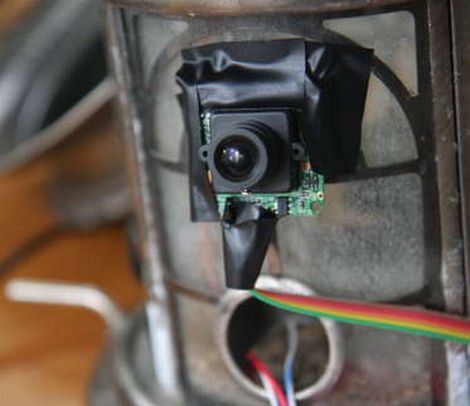
If you weren’t aware, Adafruit Industries is sponsoring the “Make it Tweet” contest over at Instructables, and this Twitter-enabled bird feeder is [quasiben’s] entry into the competition.
His bird feeder not only sends messages to Twitter, it also sends a picture of each bird to Twitpic. The feeder itself is a standard off the shelf model which has been fitted with a LinkSprite camera. A LilyPad Arduino controls the camera, sending images to his computer via a pair of XBee modules. To detect when a bird has stopped by for something to eat, [quasiben] used an infrared LED and an IR detector. The emitter and detector are positioned at opposing sides of the feeder’s opening, triggering the Arduino to snap a picture whenever the beam is broken. Once the image has been transferred to his computer, it is posted to TwitPic.
We’re pretty sure [quasiben] built this Tweeting bird feeder just because he could, but we think it’s a pretty smart idea for people who don’t necessarily have the free time to gaze out the window into their yard. It’s a great way to keep tabs on all your new winged visitors while on the go.
Launching Model Rockets Wirelessly
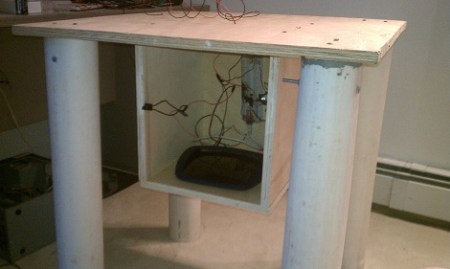
We love ballistic trajectories and the smell of black powder in the morning, so we’re really interested in the wireless rocket launch pad sent in by [Brent Strysko].
[Brent] used an ATmega with an enc28j60 ethernet shield and wireless router to launch the rocket without a physical connection with ‘the button.’ Everything on the launchpad is powered by a 12 Volt motorcycle battery, and there’s also a flashing LED for the countdown. All that’s needed to launch a rocket is to send a command from the laptop. We think this would be an awesome project when combined with the radio telemetry build we covered earlier – the computer is already there with the range safety officer.
Although amateur rocketry is extremely safe, with no high-power flight ever hitting a person (PDF warning), there’s still some risk of from black powder engines CATOing. We think [Brent] came up with a great way to make a safe hobby even safer, and managed an interesting project in the process. Check out the walkthrough of the launchpad after the break, or check out this video of the launchpad in action.
Wifi Sniffing Digital Picture Frame
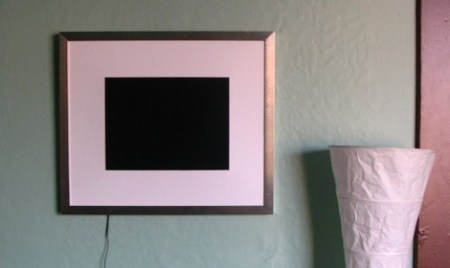
[AUTUIN] sent in a tip for his wifi sniffing digital picture frame.
A soon-to-be-trashed Pentium II laptop was rescued from Free Geek Vancouver. A lot of coffee shops around Vancouver feature local art and free wifi, so [AUTUIN] decided to combine the two. The project is designed to hang on the wall of a cafe and sniff images transmitted on the wireless network – an invasion of privacy, but as [AUTUIN] says, “that’s kind of the point.”
After gutting the laptop and putting it in a custom picture frame, Driftnet, a program that listens network traffic and picks out images from TCP streams, was installed. [AUTUIN] tested his build with an open wireless connection in his building. The results provided a wonderful narrative that started with pictures from news sites than slowly devolved to pictures from a hot-or-not style website, an online dating site and finally pictures from the inevitable conclusion of that browsing session.
[AUTUIN] is now looking for either a brave or foolish local coffee shop in Vancouver to feature his wifi sniffing picture frame. We think this would be very amusing if we weren’t using that network, not that we have something to hide or anything.
Wifon Is Back And Better Than Ever
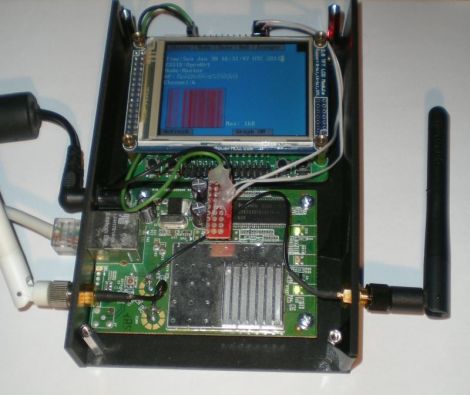
Hackaday forum member [Emeryth] recently posted his newest creation, the Wifon 2.0, which is an update to a project we featured last year. The second iteration of the device looks to make several improvements on the already solid concept.
Ditching the simple 16×4 LCD, version 2 sports a full color 320×240 touch panel LCD. A faster STM32 micro controller replaces the Atmega88 he used the first time around, allowing him to create a much more advanced user interface. The micro runs the ChibiOS/RT real time operating system, which enables multitasking, making the entire project a lot easier. Like the first version, an original Fonera performs all of the pen testing, though this time around he has ditched the vanilla DD-WRT distro for Jasager, which is purpose-built for running the Karma attack.
The project is coming along nicely, and [Emeryth] says he has a few simple apps running on the device already. He has found that running several applications on the device simultaneously is testing the practical limits of the Foneras capabilities, though he may add more memory to the router in order to squeeze a little more life out of it.
[via Hackaday forums]
Hidden Device Distorts News On Wireless Networks, Brews Beer, Is Time Machine
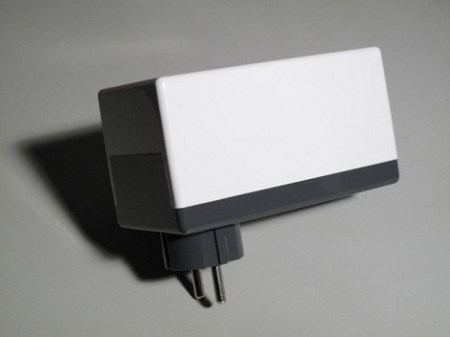
We covered the Newstweek, a wall-wart sized box that injects fake news stories over public WiFi connections last February, but now there’s a great walk through and it seems our doubts about this project were disproved.
The Newstweek uses ARP spoofing to change the text displayed on several news sites. After doing some field research, placing and configuring the device, there’s a simple web frontend that configures the man-in-the-middle hack. Right now, the Newstweek only allows a few news sites to be targeted, but the team is working on allowing anyone to add their own targets.
Aside from the relatively simple build, we’re wondering about the social engineering aspects of the Newstweek. In our previous coverage of the Newstweek, we couldn’t decide if this was a social commentary art project, or a real device. It looks like it’s both now. Would hackaday readers succumb to injecting, “President Bacon addressed the nation last night…” or would you do the responsible thing and put the “(D)s” and “(R)s” in their proper places?
The Newstweek team posted a video of a short demonstration, but check out the video after the break for the “incredibly geeky and thorough demo.”
Continue reading “Hidden Device Distorts News On Wireless Networks, Brews Beer, Is Time Machine”

